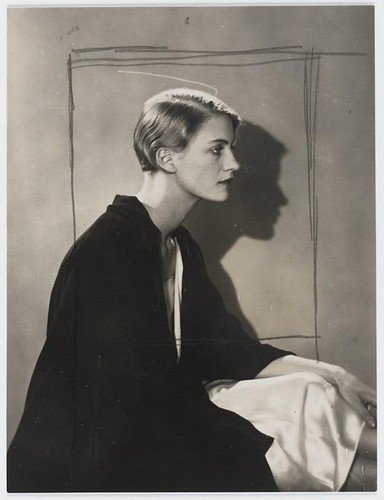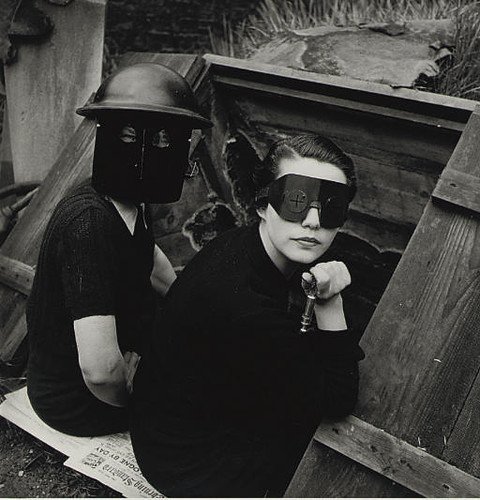It's been years since I had a visit to her house on my list.
Artichokes growing in Lee Millers’ garden, East Sussex
I’ve been interested in Lee Miller because of her mastery, her fascinating professional and personal journey, and for being one of so many kick-ass brave women that I admire from my grandmother’s generation.
Entry of Lee Millers Home, East Sussex
Farleys House is a farm in East Sussex, about a 90 minute drive from my home, where Miller lived from 1949 until her death from cancer in 1977. The guided tour (interior photography is disappointingly prohibited) shows some of the rooms on the ground floor. I entered with my imagination the surreal and poetic world of Miller and her husband the artist Roland Penrose. The rooms still feel intimate and charming, from the color they chose for the walls, the curio cabinets, to their kitchen- modest by today's standards, but captivating in its history. Miller put people like Picasso or Miró to peel potatoes while she cooked her experimental dishes, passing a course in Cordon Bleu (her posthumous recipe book was published in 2017), the kitchen was her lifesaver, a way of enduring her addiction to alcohol and post-traumatic syndrome left by her experience as a war correspondent in Europe during World War II.
"Lee Miller, 1930, by Man Ray" by dou_ble_you is licensed under CC BY-ND 2.0.
Born on April 23, 1907 in New York, Miler was sexually abused at the age of 7 and expelled from several schools. She travelled to study in Paris and a year later, back in the U.S at 19, she becomes a model for Vogue, after Condé Montrose Nast himself saved her from being hit by a car in the middle of Manhattan. Her modeling career came to an abrupt end when an image of her taken by Edward Steichen is used for a tampon advert. It is then that she decides to return to Paris to work as an assistant for Man Ray and becomes his muse and lover. Some works attributed to Man Ray from this time are in fact by Lee Miller, including some solarizations, a technique they rediscovered while working together in the lab. These were her surrealist years, even appearing in the film Le sang d'un poète by Jean Cocteau. A new life chapter takes her back to New York and there she establishes herself as an editorial photographer for Vogue, then a marriage with an Egyptian millionaire before her return to Europe where she begins her relationship with Roland Penrose.
"1942 ... brains, beauty and bravery!" by x-ray delta one is licensed under CC BY-NC-SA 2.0.
The war in Europe breaks out whilst living in London and she gets accreditation as a war correspondent. Miller applies her courage and skill to photograph the devastation of the London Blitz, the Buchenwald and Dachau concentration camps and children's hospitals. During the taking of Munich, she is photographed by her partner and collaborator, the journalist David E. Scherman in Hitler’s apartment bathtub.
"1907-1977 Women Firewatchers London for British Vogue 1940 by Lee Miller" by Foxtongue is licensed under CC BY-NC-SA 2.0.
"Lee Miller in Hitlers Bath" by continentcontinent.cc is licensed under CC BY 2.0.
After the war, she continues to work for Vogue for a few more years but her mental health deteriorates as her alcohol abuse takes over. Following the birth of their son Anthony, Miller and Penrose move into Farleys House. Miller is an absent mother who takes refuge in her kitchen, while Anthony seeks her attention, MI5 has her in the crosshairs, suspected of Soviet espionage.
Fast forward to a warm afternoon in August 2022. I walk through sculptures, trees and the garden that Miller cultivated and her ashes were scattered. I wonder what she would have to say today if we could sit together. Miller did not want to speak about the war, she kept away all her documents and negatives. It was not until the early 1980s, when his son discovered them, sixty thousand files in all. Since then he set out to catalogue, publish and publicize his mother's work. Now in her barn there is a gallery where her 1940s wartime work is exhibited along with that of Giles Duley in the Ukraine, just a few months ago...very little has changed.
I recommend visiting Farleys House as much as looking at her work. A film by Ellen Kuras, Lee, is also due be released in 2023, with Kate Winslet as Lee Miller, based on Roland Penrose's 1985 biography.









